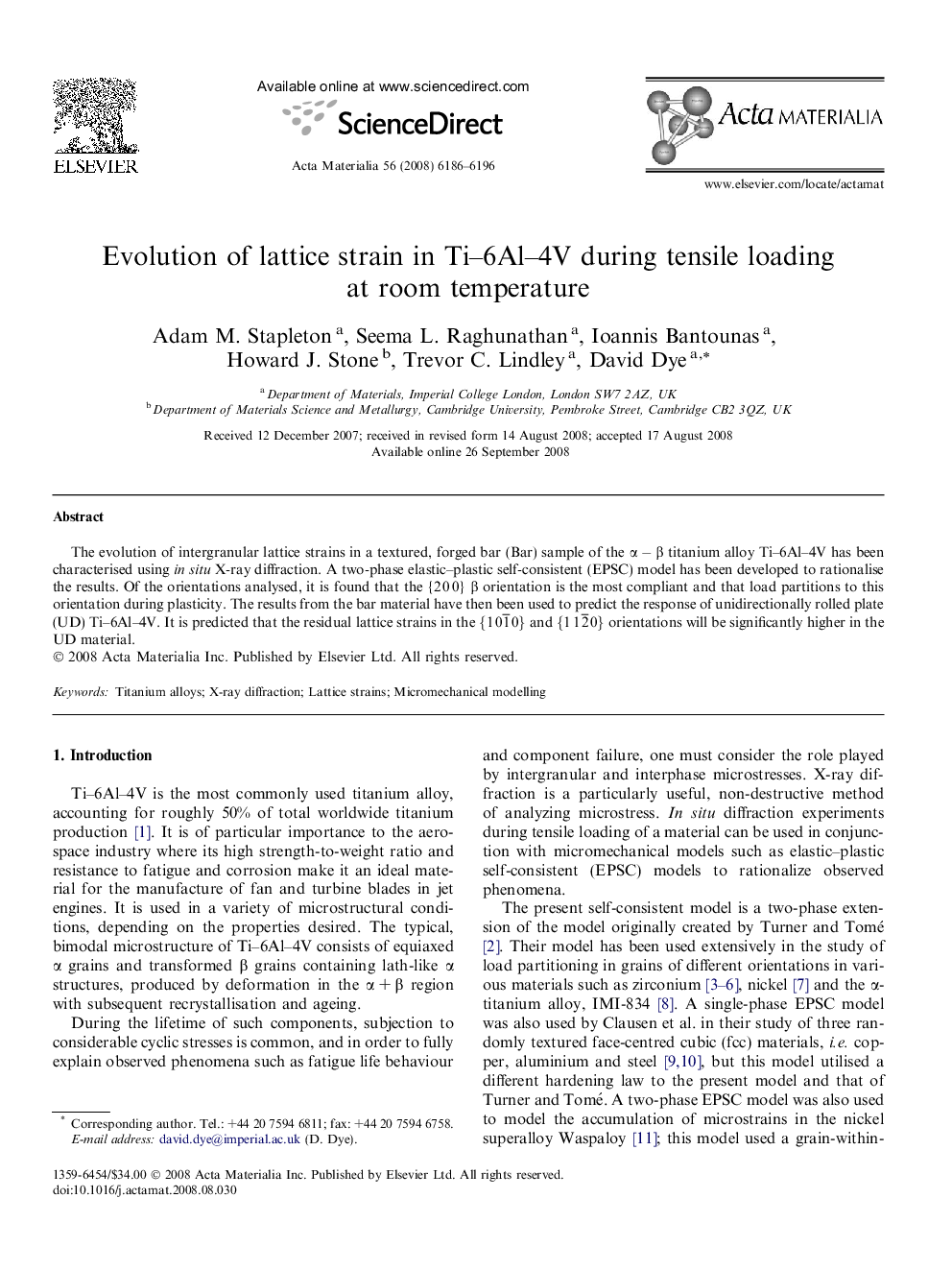| Article ID | Journal | Published Year | Pages | File Type |
|---|---|---|---|---|
| 1448686 | Acta Materialia | 2008 | 11 Pages |
Abstract
The evolution of intergranular lattice strains in a textured, forged bar (Bar) sample of the α − β titanium alloy Ti–6Al–4V has been characterised using in situ X-ray diffraction. A two-phase elastic–plastic self-consistent (EPSC) model has been developed to rationalise the results. Of the orientations analysed, it is found that the {2 0 0} β orientation is the most compliant and that load partitions to this orientation during plasticity. The results from the bar material have then been used to predict the response of unidirectionally rolled plate (UD) Ti–6Al–4V. It is predicted that the residual lattice strains in the {101¯0} and {112¯0} orientations will be significantly higher in the UD material.
Related Topics
Physical Sciences and Engineering
Materials Science
Ceramics and Composites
Authors
Adam M. Stapleton, Seema L. Raghunathan, Ioannis Bantounas, Howard J. Stone, Trevor C. Lindley, David Dye,
